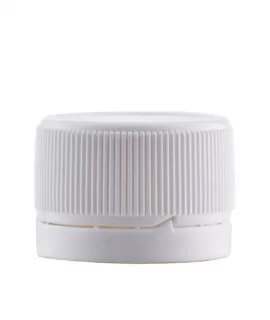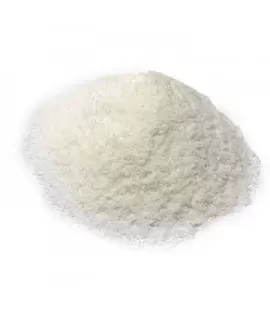ZINC NITRATE 46%, L
5.80 €
Zinc dinitrate, nitric acid zinc salt, zinc nitrate, zinc (II) nitrate solution, CAS 7779-88-6, Zinc nitrate (Zinc nitrate)
Parameter | Feature |
Zinc nitrate | Zinc dinitrate, zinc salt of nitric acid, zinc nitrate, zinc (II) nitrate solution |
Formula | Zn(NO3)2 |
Structure |   |
IUPAC | Zinc nitrate |
CAS | 7779-88-6 |
Clay mass | 189.36 g/mol (Anhydrous) |
Density | 1,57 g/cm3 (solution) |
Solubility | Very soluble in water and alcohol, miscible in any ratio |
Zinc nitrate is an inorganic compound with the chemical formula Zn(NO3)2.Zinc nitrate is a white crystal or clear colourless solution with a wide range of applications.
In the textile industry, zinc nitrate can be used as a dye in dyeing. An example of the reaction is the precipitation of zinc carbonate: Zn(NO3)2+Na2CO3→ZnCO3+ 2NaNO3. Pure zinc nitrate is used as a bleaching agent to remove colour from fabrics. Zinc nitrate is used in the manufacture of non-combustible fabrics to increase safety and durability. It is also used for antimicrobial treatment, making fabrics more hygienic and suitable for sensitive applications such as medical textiles.
In metalworking, zinc nitrate is used as an electrolyte in the zinc electroplating process. It is often used as a component in anti-corrosion coatings and/or rust-bonding products. Such coatings form a galvanic cell on the surface, resulting in the oxidation of the zinc while leaving the metal surface undamaged by corrosion. Cleaning the metal from rust with acidic cleaners creates an acidic medium which promotes corrosion of the metal, while the addition of zinc nitrate protects the metal from re-corrosion.
In agriculture, zinc nitrate is used as a fertiliser. Zinc nitrate is an ingredient used to feed fruit trees and protect against acid rain. Zinc nitrate increases protein synthesis and stimulates plant growth, and increases plant resistance to drought, heat and frost. Zinc deficiency can spoil the expected yield, as virtually all plants, especially cereals, are sensitive to it. Deficiency impairs plant respiration and protein synthesis. Zinc fertilisers are best suited to calcareous and carbonate (neutral, alkaline and basic) soils. Zinc nitrate is suitable for foliar fertilisation. The general recommendation for use is 0,3-1,0 l/ha. Spray 2-3 times during the growing season in mixtures with plant protection products and other foliar fertilisers. Can be used in solutions with plant protection products. Check compatibility of mixed products before use. Use a minimum of 150 L/ha of water. Do not exceed the recommended values.
15,5 % Water-soluble zinc (Zn) as zinc nitrate 250 g/l , 6,9 % Total nitrogen (N) as nitrate nitrogen 107 g/l
In industry, zinc nitrate is used as a resin/rubber catalyst, as a catalyst in chemical production, as an acid catalyst. Zinc nitrate is used as a strong oxidising agent in catalytic reactions. It is used in the preparation of micropore-enriched, matching organic (natural) zinc phosphate, which is used as a catalyst in various applications.
In ceramics and glass, zinc nitrate plays an important role in improving the thermal and mechanical properties of ceramic materials, resulting in ceramics with high strength and durability. In glass production it acts as a flux, improving the optical properties and stability of glass products. Contributes to the production of specialised glass, such as radiation shielding glass and glass ceramics.
In the environmental field, zinc nitrate is used to reduce pollution in contaminated waters and soils. In water treatment, zinc nitrate is used in purification processes to remove impurities and harmful substances from water, as zinc nitrate forms complex compounds with most heavy metals, rendering them inactive. In soil remediation, it helps to stabilise heavy metals in contaminated soils, reducing environmental risks.
In school experiments, zinc nitrate is used as an electrolyte in a galvanic cell experiment, and is also used in an oxidation test, where it is heated until oxides of nitrogen are released, then a smouldering stick is placed in a test tube and its combustion is observed as oxygen is released at the same time. Dry zinc nitrate is used to produce flash powder.
Important: Add the product to your basket, fill in the recipient's details and confirm the order. Thank you!
To save your precious time, we will deliver your order to your address at your convenience !
*- The pictures of the goods may not correspond to the actual appearance, colour, assembly or shape of the goods and their packaging. The information in the product description is of a general nature and may not be identical to the information on the product packaging. The information given on stock and prices may in some cases differ from the actual price and stock of the goods
Signal word: DANGEROUS |
Danger icons:
|
Danger phrases: H272 May increase fire risk, oxidizer. H302 Harmful if swallowed. H315 Irritating to skin. H318 Severely damages eyes. H335 May cause respiratory irritation. H411 Toxic to aquatic organisms, causes long-term effects |
Precautionary statements: Prevention: P210 Keep away from heat sources, sparks, hot surfaces with open flames. Do not smoke. P261 Try not to inhale dust/fumes/smoke/smoke/vapours/aerosols. P264 Wash skin/hands thoroughly after use. P270 Do not eat, drink or smoke while using this product. P271 Use only outdoors or in a well-ventilated area. P273 Keep out of the environment. P280 Wear protective gloves/protective clothing/use eye/face protection. Ambulance: P302+P352 IN CASE OF CONTACT WITH SKIN: Wash with plenty of soap and water. P304+P340 INTRODUCTION: Remove the victim to fresh air; keep the victim calm and in a position to breathe freely. P305+P351+P338 IN EYES: wash gently with water for several minutes. Remove contact lenses, if present and if easy to do so. Continue washing your eyes. P391 Collect leaking material. Disposal: P501 Dispose of contents/container according to national requirements. |
Related products
(8 other products in the same category)














